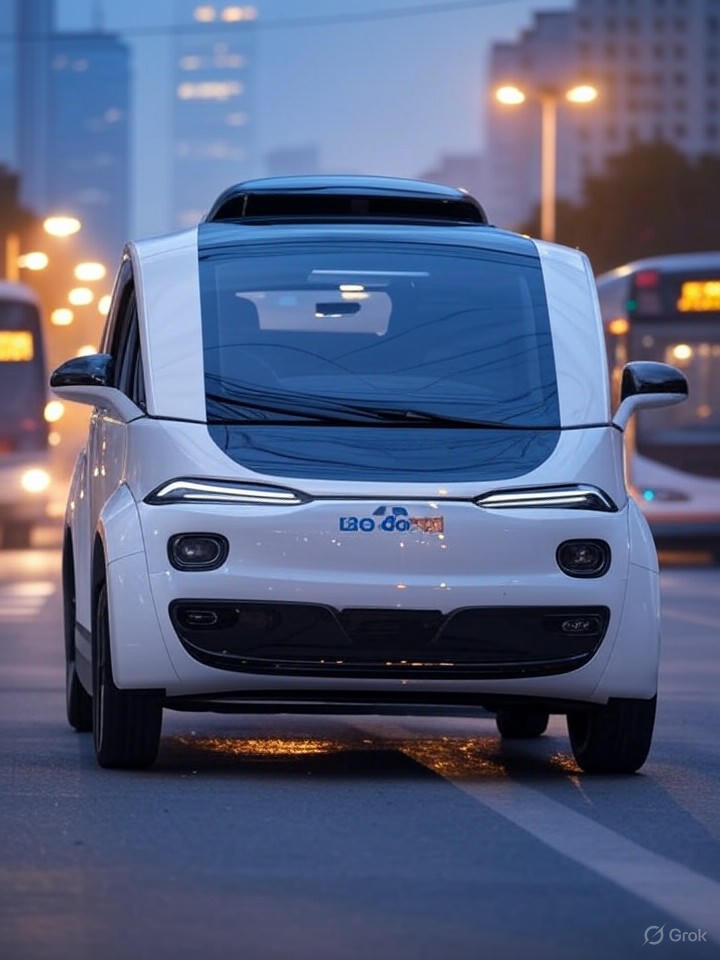As autonomous vehicles edge closer to mainstream adoption, the robotaxi sector is witnessing explosive growth, particularly in China, where regulatory support and technological innovation are accelerating deployment. In Wuhan, Baidu’s Apollo Go operates over 400 driverless vehicles, serving as a blueprint for urban mobility. This momentum is echoed globally, with projections indicating the market could surge from $0.4 billion in 2023 to $45.7 billion by 2030, according to a report from MarketsandMarkets.
Beyond China, companies like Waymo are expanding in the U.S., scaling operations in cities such as Los Angeles and San Francisco. Meanwhile, Tesla’s announcements signal ambitious plans for robotaxi fleets, though full implementation faces hurdles in various markets.
China’s Regulatory Edge and Fleet Expansion
Recent approvals have allowed Baidu to test self-driving taxis in Hong Kong, while WeRide partners with Uber in the UAE, highlighting cross-border ambitions. Posts on X from users like unusual_whales note expectations of China’s robotaxi fleet ballooning to nearly 2 million by 2035, up from just 4,100 currently, as per Goldman Sachs insights shared widely online.
This growth is fueled by government blueprints aiming for large-scale production of conditional autonomous vehicles by 2025, as detailed in analyses from NextMSC. In contrast, the U.S. grapples with safety concerns and patchwork regulations, slowing broader rollout.
Market Projections and Economic Viability
Globally, the robotaxi market is forecasted to hit $43.76 billion by 2030, growing at a 73.5% CAGR from 2025, according to Grand View Research. In China, Barclays estimates suggest up to 500,000 robotaxis on roads by 2030, with unit economics nearing break-even, excluding development costs, as reported in recent Investing.com coverage.
Such projections underscore the sector’s potential to disrupt ride-hailing, targeting 5-10% penetration in China’s high-tier cities with 4.5-5 million vehicles. Advances in AI and V2X technology are key drivers, propelling the market from $7.9 billion in 2025 to $189 billion by 2034, per a GlobeNewswire outlook.
Key Players and Competitive Dynamics
Leading the charge in China are Baidu, Didi Chuxing, and startups leveraging massive ride-hailing user bases—over 500 million, generating 16 billion trips annually. Globally, Waymo and Cruise are expanding pilot programs amid rising consumer demand, as highlighted in an OpenPR analysis showing a 74.7% CAGR.
Tesla’s proposals to launch robotaxis in China, reported by CNBC, could intensify competition, though approval for full self-driving features remains pending. South Korea, Germany, and Japan are nearing launches by 2025, per Counterpoint Research.
Challenges and Future Hurdles
Despite optimism, safety incidents and public trust issues persist. In the U.S., regulatory scrutiny has delayed expansions, while China’s blueprint includes monitoring bodies to build confidence. Economic models show each robotaxi costing $35,000-$40,000 to produce, making scalability viable but capital-intensive.
Looking ahead, integration with electric vehicles and urbanization trends will define winners. As Yahoo Finance notes, the path to 2.3 million units by 2035 demands innovation in adaptive AI, positioning China as the frontrunner in this transformative industry.
Strategic Implications for Investors
For industry insiders, the robotaxi boom offers investment opportunities in ancillary tech like sensors and software. Goldman Sachs revisions, echoed in X discussions, project 535,000 units by 2030, signaling robust returns for early movers.
Ultimately, as autonomous mobility reshapes transportation, China’s lead—bolstered by aggressive testing in cities like Wuhan—could set global standards, with ripple effects on urban planning and sustainability worldwide.




 WebProNews is an iEntry Publication
WebProNews is an iEntry Publication